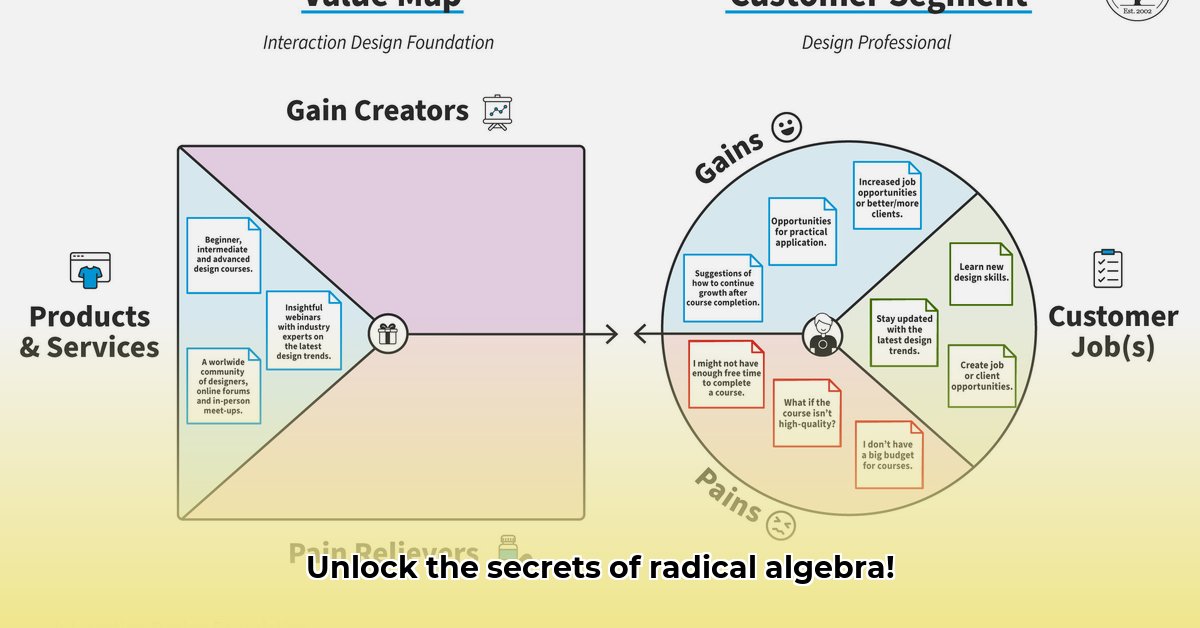
Simplifying Radical Expressions: Two Effective Methods
Feeling overwhelmed by simplifying radical expressions? This guide provides two straightforward methods to master this crucial algebra skill. We'll compare and contrast each approach, highlighting their strengths and weaknesses, so you can choose the best method for your needs. Whether you're prepping for an exam or simply looking to enhance your math skills, this guide will empower you to tackle even the most challenging radical expressions with confidence.
Method 1: Simplify First, Then Multiply
This method prioritizes individual simplification before multiplication. Think of it as a "clean-up-then-combine" approach. It's ideal for those who prefer a methodical, organized approach, breaking down larger problems into smaller, manageable parts.
Step 1: Individual Simplification: Begin by simplifying each radical term independently. This involves identifying and extracting perfect squares (numbers that result from squaring an integer, like 9 = 3 x 3). Remember the product rule of radicals: √(ab) = √a * √b. This allows you to separate the radical into more manageable parts. For example, √(12x⁴) can be simplified to 2x²√3 (because √12 = √(4*3) = 2√3 and √x⁴ = x²).
Step 2: Multiplication: Once each individual radical is simplified, multiply the resulting terms using the distributive property (often remembered by the acronym FOIL: First, Outer, Inner, Last).
Step 3: Combine Like Terms: Finally, combine any terms with identical radical components. For instance, 3√2 + 5√2 simplifies to 8√2. This final step ensures the most concise expression.
Example: Simplify (√8 + √2)(√2 - √18)
- Simplify: √8 = 2√2 and √18 = 3√2
- Multiply: (2√2 + √2)(√2 - 3√2) = (3√2)(-2√2) = -6(2) = -12
This method's strength lies in its clear, structured approach, decreasing the likelihood of errors. However, the intermediate steps might appear more complex before simplification. Is this the best method for every problem? Not necessarily – let's explore another option.
Method 2: Multiply First, Then Simplify
This approach reverses the order of operations. It's a "combine-then-clean-up" method, prioritizing multiplication before individual simplification. This strategy is often quicker for simpler problems, especially those with fewer terms.
Step 1: Multiplication: Begin by multiplying the radical expressions together, using the distributive property or FOIL. Do not simplify individual radicals at this stage—focus solely on the multiplication.
Step 2: Simplification: Once multiplication is complete, focus on simplifying each individual radical within the expression. Once again, find and extract those perfect squares.
Step 3: Combining Like Terms: Finally, look for common terms and simplify by combining them.
Example: Simplify (√8 + √2)(√2 - √18).
- Multiply: (√8 + √2)(√2 - √18) = √16 - √144 + 2 - √36 = 4 - 12 + 2 - 6 = -12
Notice how this method reaches the same result with fewer intermediate steps.
Comparing the Methods
| Feature | Method 1: Simplify First | Method 2: Multiply First |
|---|---|---|
| Order of Operations | Simplify, then multiply | Multiply, then simplify |
| Initial Complexity | More manageable initial steps | Potentially messier initial steps |
| Intermediate Steps | Generally cleaner | Can be more complex |
| Efficiency | Can be more time consuming for simple problems | Can be faster for simple problems |
Choosing the best method depends largely on the complexity of the problem. Simple expressions may benefit from the speed of Method 2, while more complex ones might benefit from the organization of Method 1. Practice both methods to determine which approach best suits your learning style and problem-solving preferences.
Actionable Intelligence: Putting Your Skills to Work
Mastering radical simplification is crucial for success in higher-level math courses and beyond. Here's how you can apply these skills:
- Improve Algebra Proficiency: Strengthen your foundation in algebraic manipulation and problem-solving.
- Prepare for Standardized Tests: Boost your score on exams like the SAT, ACT, and other standardized tests.
- Enhance Problem-Solving Skills: Develop a systematic approach to tackling complex mathematical problems.
Remember that both methods lead to the same mathematically correct answer, so it's more about choosing the approach that best suits the problem and your comfort level. Choose wisely, and practice regularly to hone your skills! Which method will you try first?